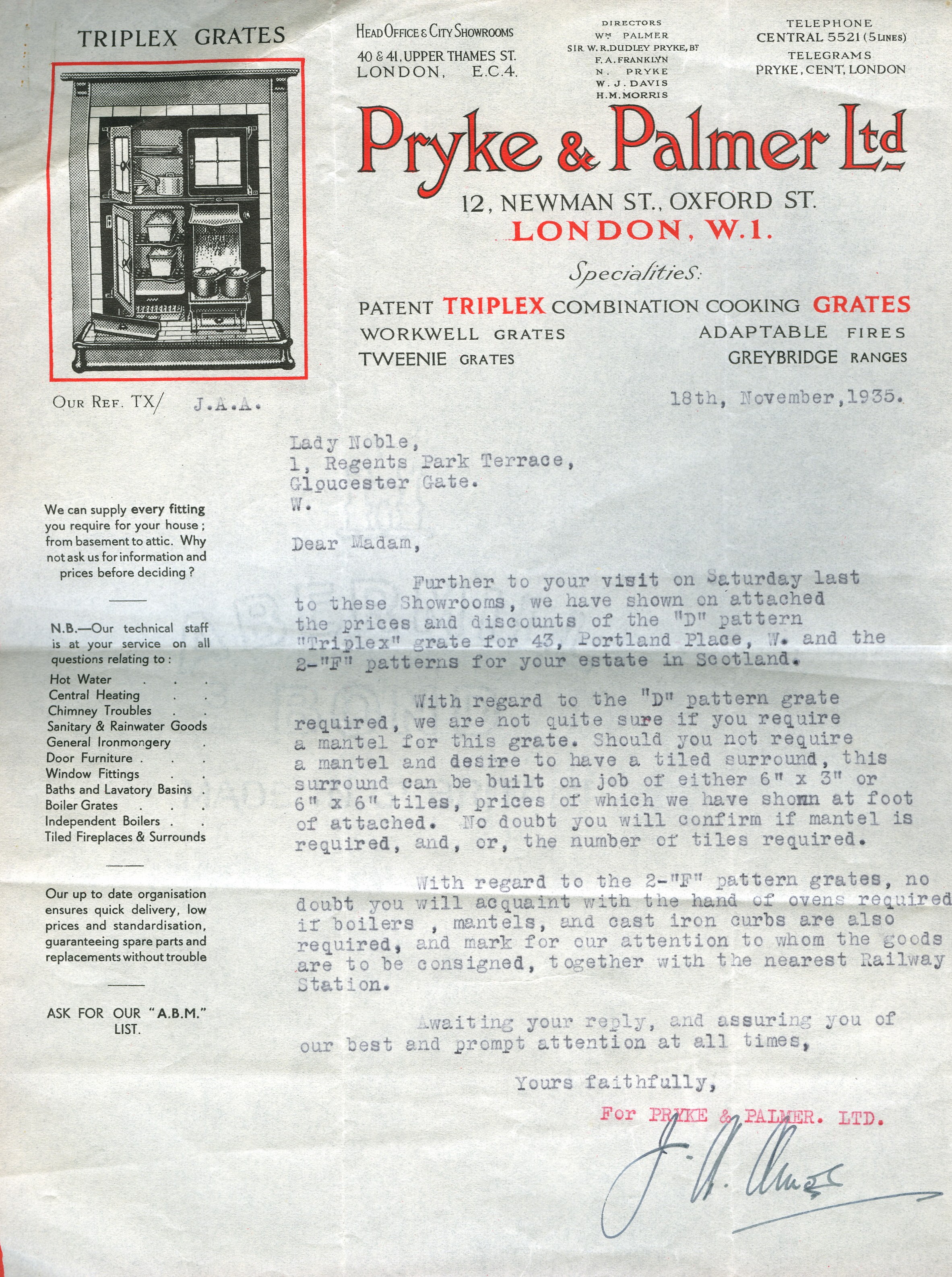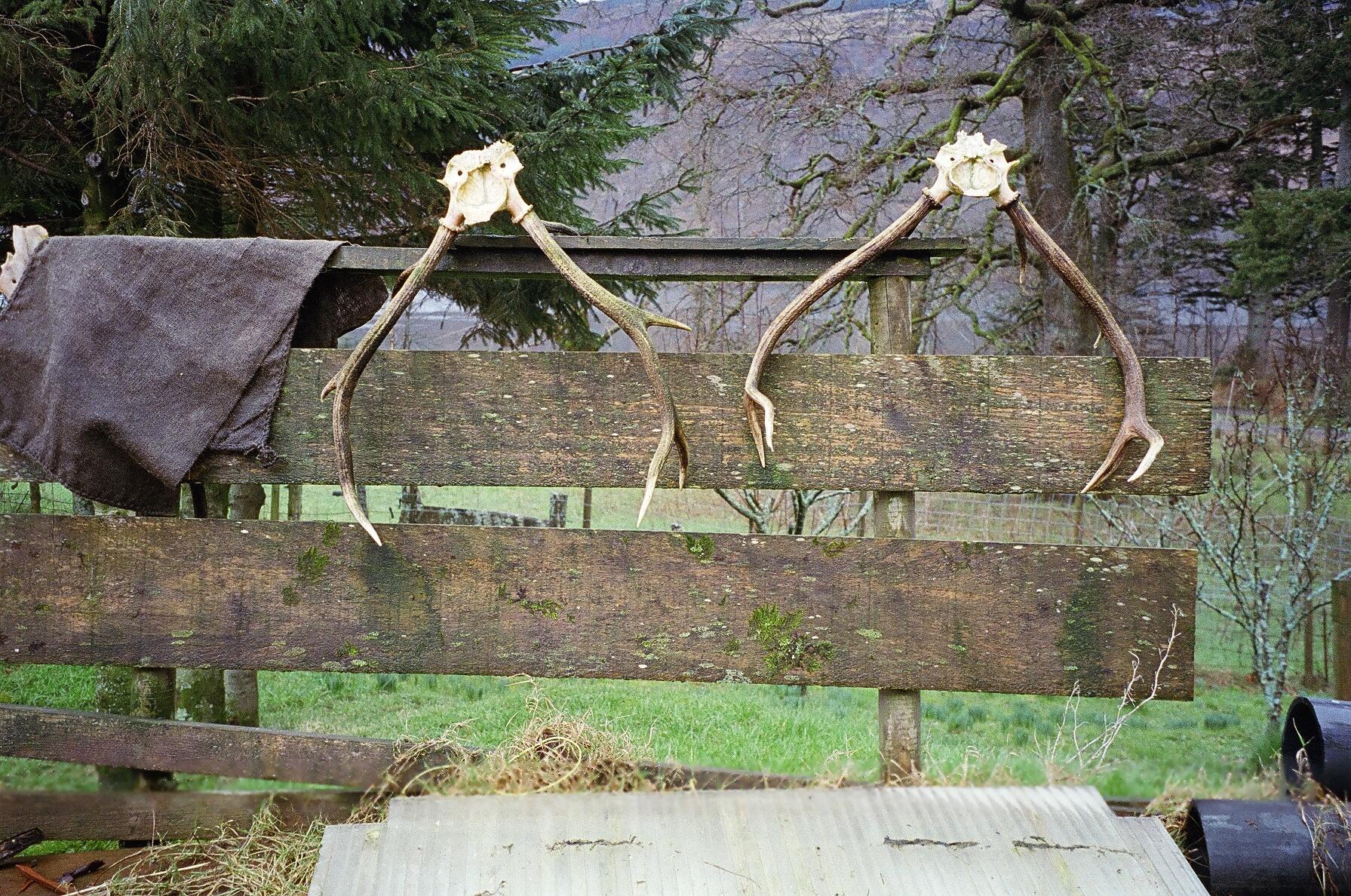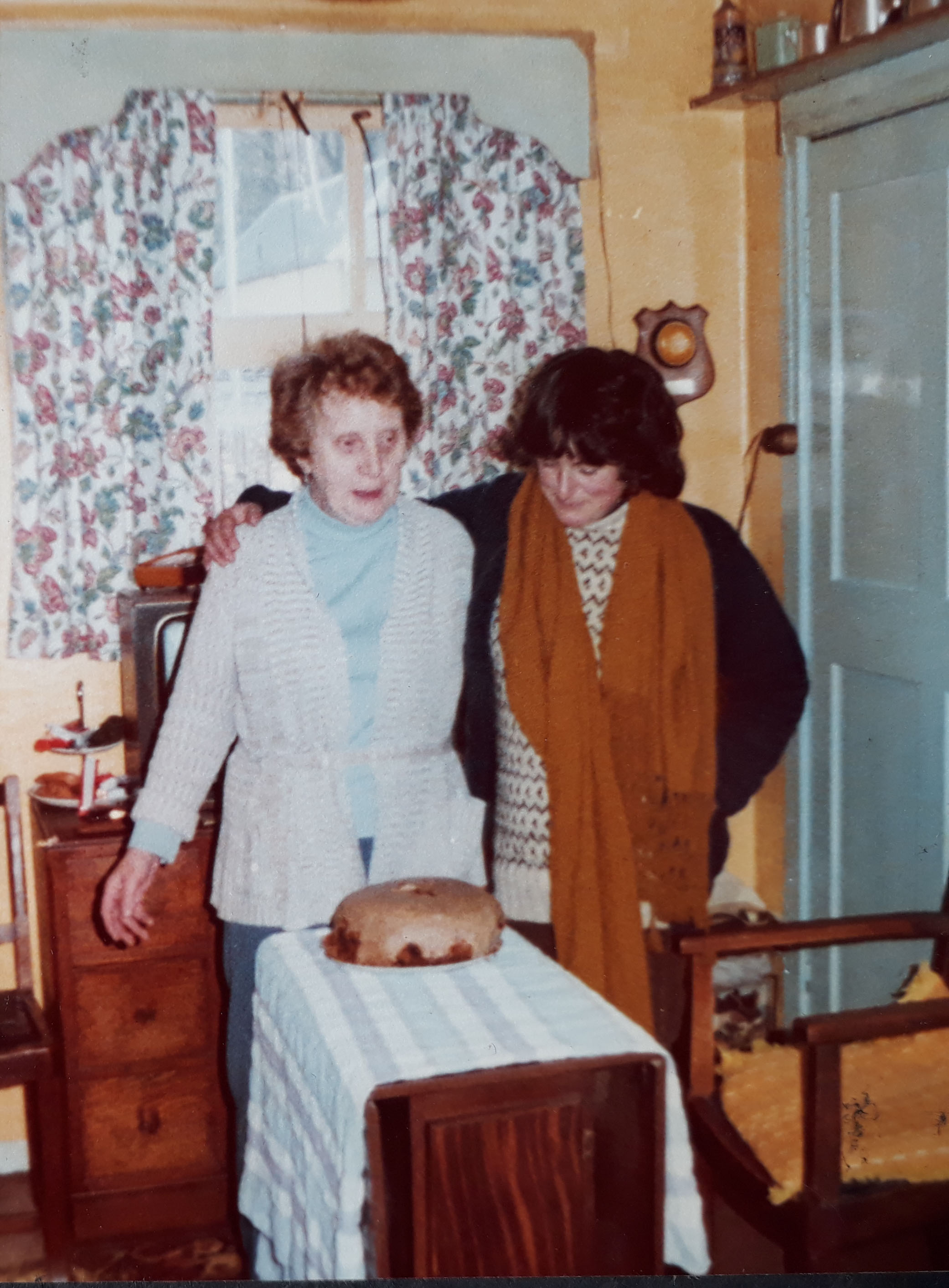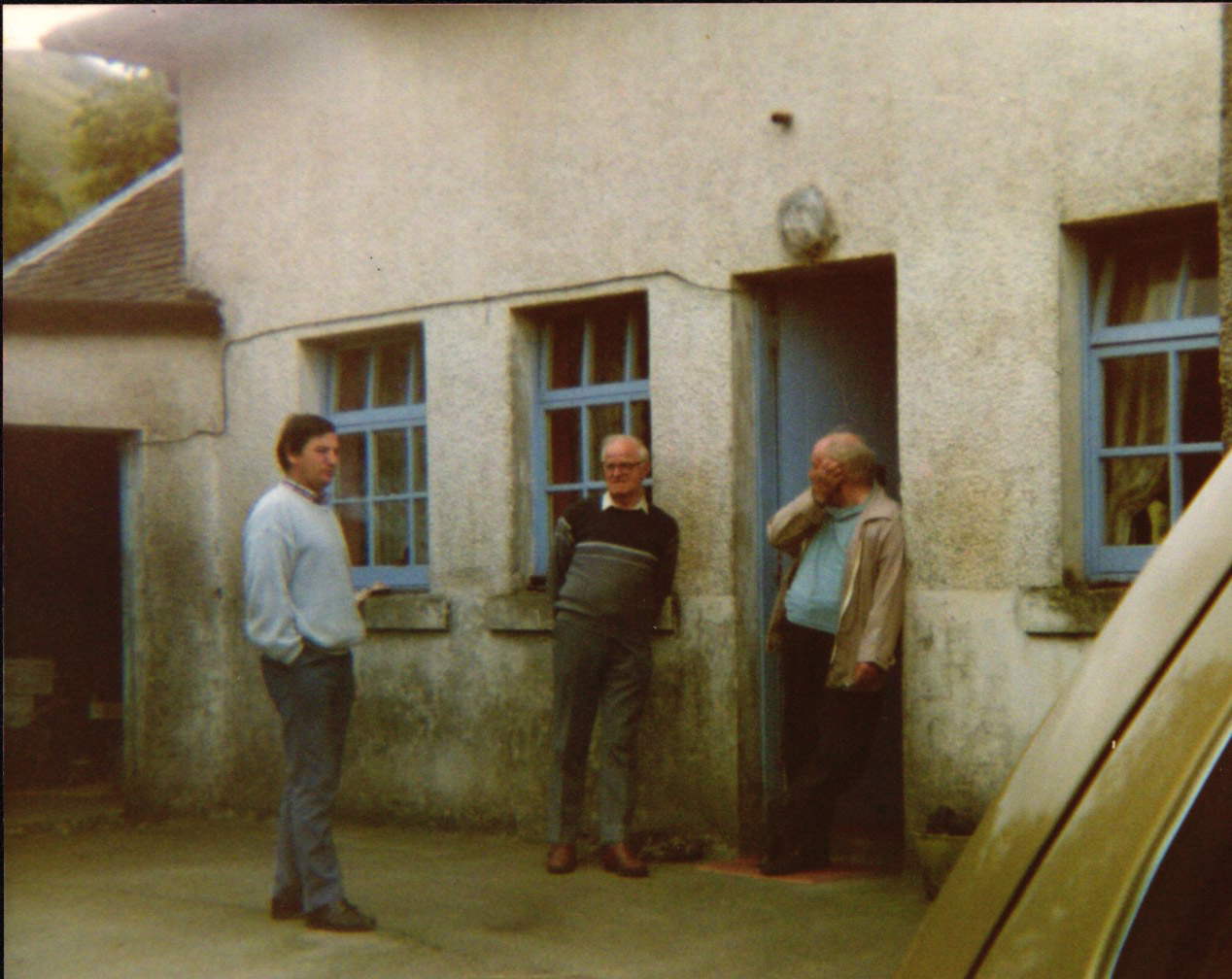Lorimer Cottage | 18 occupants (1931 - 2016)
Lorimer's plan for the building still survives and is held at Ardkinglas House, signed RS Lorimer, ARSA Architect 49 Queen Street, Edinburgh, October 1908. This is a ground floor floor plan.
First appearing in the census records in the early 1930s, built c1930 to the designs of Robert Lorimer. Originally built as the kennels. Lived in by Peter whose parents moved in about 1947.
Kennels were intended for pointers and setters, for game bird, grouse particularly, for the rough shooting around the woodlands.
ii. Description
a. General
Constructed of shuttered concrete and harled in cement. This building has a considerable presence as a formally designed piece of architecture. The building is tripartite, with a central block that is 1 storied under a slated roof, hipped at both ends with swept eaves; single storied wings extend out for some distance on either side. The latter also have slated roofs swept eaves and hipped ends.
b. Exterior
Along the S side is a continuous series of dog compounds. The exterior is defined by brick-built cement rendered dwarf walls with a concrete coping, supporting railings. Internally the space is subdivided by further dwarf walls into three. A narrow central area that leads to the rear entrance of the house is partly sheltered by a tin-roofed porch. Within this there are gates leading to the further dog compounds on either side. Each of the dog compounds has a central door as well leading out to the S.
The kennel runs were all paved with tarmacadam, which was fairly innovative at this stage. The tar rose up over the lower face of the surrounding dwarf walls for three courses of bricks or so, rendered in cement above. This detail was so that the interior of the yard could be hosed down with ease.
In each run there had been a brick plinth butting up against the side of the building, on top of which was a cast iron watering trough with brass tap immediately above.
The rendering on the exterior of the building was cast from the windowsills up, but below that level was plain rendered. This may have been one way of protecting the dogs.
The central run which was accessed directly from the interior of the house has a crinkly tin roof on a wooden frame, this is hipped to the south, permitted the dog keeper to come out and calm the dogs, even in poor weather. The porch is supported by cast iron piers outer hand, buts up against the building itself.
On the west side of the building there are remains of the ferret boxes, pest control for rabbits and so on. There are brick-built cement rendered plinths that remain as base for wooden hutches, which had been roofed over and you can see the fillet where the roof had run up to it; a brick-built central subdivision still remains.
On the N elevation of the building there is a central small yard area, concrete paved, leading to the main cottage itself. Flanking this on either side to E and W are single-storied flat roofed extensions. The latter are fairly shallow in depth and the outer angles between them and the wings of the main house are filled by small further small dog runs. A fox used to be kept in the run to the NE whose name was Susie.
c. E wing
The eastern wing is largely in its original condition, both wings were intended as kennels originally. The entrance into the wing from the S side led to a larger room. This has a coved ceiling; walls are all plastered onto the hard. The original paint scheme is still apparent, cream painted above and blues and black below. The chamber is concrete-floored.
There is a partition wall within and there's a smaller chamber further E with a good door, perhaps of teak. Of similar reddish hardwood are all of the windows and doors elsewhere in the building; good heavy brass door furniture throughout. This seems to have had been oiled originally. According to John MacDonald somebody had described the wood, which looked very much like teak, as Jara wood and having come from Africa, also used in Ardkinglas House.
The smaller chamber further E was apparently an isolation kennel, this appointed in exactly the same was as the larger chamber. Here there is a door in the N wall that leads to a smaller run outside. In the plastered ceilings of each chamber there is a central ventilation louvre.
NE extension
The flat roofed extension to the NE has two exterior entrances. One was to the medicine cabinet for the welfare of the dogs and the other one, further E, was to a WC interior; this entrance and WC have now been blocked off to the exterior.
The eastern flat roofed wing, the eastern flat roofed extension had another part to it (to the S), possibly a wood shed.
NW extension
The western flat roofed extension was the heating chamber. This is concrete floored except along its S side where there had been an iron rail and steps down to the boiler. This sunken area had had an iron handrail.
W wing
The western slated roof wing, unlike its partner opposite, was taken into the house and the former kennels inside converted into living accommodation. However, the dog runs on either side to N and S are still in use as dog runs.
The main part of the W wing has two chambers, one is described as the sick-room - in order to isolate out unwell animals. This was broken through into the next larger chamber and the existing door apparently is secondary, although it itself is relatively early in date. The door is apparently re-used from elsewhere; it has raised and fielded panels on one side and mouldings on both sides (fillet and ovolo).
Main house
The W wing was opened into the main house by the breaking through of the back of the press in the kitchen-cum-living room (W ground floor room). This room is lit by large windows from the back and there's a substantial cast iron range within a projecting fire surround. This type of fire, according to John, is called a Triplex. It is of cast iron enamelled in black with inset ceramic tiles in turquoise and a matching hearth area below. It incorporates a boiler which heats the house's water. The Ardkinglas estate papers have full documentation for the installation of this range, with catalogue, c1930.
The fire surround and the press door which still remains are all painted blue and the former press door is probably also of the hard wood. There's a cast iron principal joist plastered over, running E/W across the ceiling of this room.
The house is accessed from the N through a plank door that's framed within a vertical tongue groove boarding externally with a bead at the joint, leads into a very small vestibule with a door on either side and an under-stair area immediately in front. The doors on either side are four panelled with planted mouldings on both sides.
The eastern ground floor room of the main house is termed boiler house on the plan, although this doesn't necessarily seem to be what was built. The plan shows a broad projecting chimney breast and in front of that two circular boilers within framing, it's possible that the patching on the W wall face, which can now be seen, relates to that. The southern side of this room has been partitioned off, the small bathroom and WC to the SE and a little vestibule to the cupboard exterior area to the SW.
One goes up a straight flight of stairs accessed off the kitchen/living room. There is a very short hand rail that just leads off the lower level, which has some interesting moulded detailing on the top. At the head of the straight flight there is a press in front as one reaches the very small landing at the top. A bedroom on either side. Each of these had originally had fireplaces, both now gone. All of these interiors are lined with plaster onto the metal lath.
The house is lived in by Peter Manson, retired game keeper, and his father was also the game keeper on the estate. The two up stairs bedrooms are notable for their very good brass door furniture.



















































